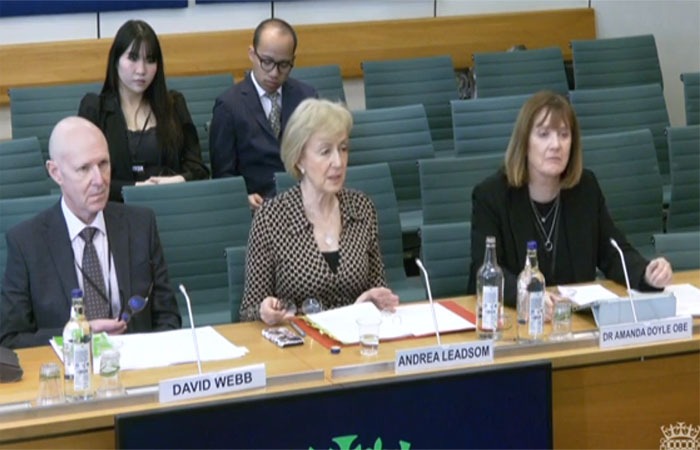Public access to pharmacy services remains good despite closures, pharmacy inquiry told
In Health & NHS news
Follow this topic
Bookmark
Record learning outcomes

Despite the number of pharmacy closures in the past five years the public’s access to community pharmacies remains good, the final session of the Health and Social Care Committee’s inquiry into the pharmacy sector was told this morning.
Asked by the committee chairman, Steve Brine, whether the government “was relaxed if there is some rationalisation in the ‘bricks and mortar’ estate of community pharmacies”, the pharmacy minister, Andrea Leadsom responded that “the government takes its responsibility very seriously for ensuring access to medicines for all residents in England. We monitor very closely closures and openings.”
She had earlier insisted that it was still the case that 80 per cent of people lived within 20-minute walk of a pharmacy, and that there were approximately twice as many pharmacies in deprived areas as elsewhere.
“Access remans good,” the minister said. “In the year 2023/24 we have seen about 1,500 closures and 1,100 new openings. It continues to be a thriving market, but pharmacies are private businesses. In addition we now have 400 distance dispensing pharmacies.”
Opening the session, Mr Brine had contrasted the positive headlines about the promising start to the Pharmacy First service in England with the negative comments he had received on the dire financial situation the sector was in.
He noted that Paul Rees, the National Pharmacy Association chief executive, had said on the health and politics podcast that Mr Brining hosts, that “72 per cent of NPA members are in deficit, the funding model is broken, and a new deal is needed”.
“There has been positive press and statistics around Pharmacy First, but we have part of the sector saying ‘We are closing, we cannot make the sums add up’. Where does the truth lie?” he asked
It was a question the hearing largely failed to answer.
Mr Brining cited Community Pharmacy England’s position that there had been a 30 per cent cut in real terms funding since 2015, and that financial pressures were extreme and showed no signs of improving, before asking Dr Amanda Doyle, national director for primary care and community services, NHS England: “How relaxed are you about a rationalisation of the ‘bricks and mortar’ pharmacy estate?”
“As long as there is access for the population, that is the important thing,” she said. “At the same time as we have had a 9 per cent reduction over five years in the number of the community ‘bricks and mortar’ pharmacies, concurrently there has been a 9 per cent increase in distance selling pharmacies, so we are seeing a balance in a different way of offering a service.
“Equally, if our strategy is to increase the role of community pharmacies as first line provider of clinical services to the community, then it is important that we have that estate. We are committed that community pharmacy remains embedded in the community. We look closely at movements in the market.”
